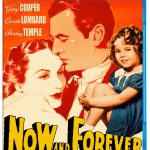Back when I was in high school, when dinosaurs roamed the Earth, as a fundraiser for Student Council, we would choose a movie to show, charge students admission and actually get permission to hold this event during the school day. Long before the advent of VCRs and other home video playing devices, this was considered a very special occasion and the choosing of which film we’d show was not taken lightly. Thus, after a great many perusals of the catalog of movies available for rental and a heated discussion or two, during my junior year, we choose to show The Abominable Dr. Phibes.
From the many screams that swept across the auditorium during its more gruesome moments, we could tell it was an inspired choice.
And while most films that are remembered fondly from one’s youth rarely live up to the good opinion we have in our memories, I’m happy to report that Phibes and its sequel, Dr. Phibes Rises Again, still deliver, their camp sensibility and luridly executed scenes of murder able to deliver a grim chuckle or guilty thrill some 50 years after their initial release.
For the uninitiated, Vincent Price stars in the title role as a vindictive doctor seeking revenge on the surgeons he blames for his wife’s death. Not content with simple murders, he goes to great lengths to kill each in a manner connected to one of the Ten Plagues of Egypt. This allows director Robert Fuest to set up some magnificent set pieces, whether it being a bed chamber aswarm with large bats that drain a victim of all his blood, to a physician killed by rats while flying a biplane. Outlandish and ridiculous, these grand moments are punctuated throughout by Price’s hammy performance, one buoyed by grand gestures and exaggerated expressions, as Phibes’ voice has been rendered useless.
In the sequel, the good doctor returns with the opposite agenda as he sets out to Egypt to find the Scrolls of Life in an effort to resurrect his wife. Discovering the location of the River of Life, Phibes must kill his enemies, among them the eternal Darius Biederbeck (Robert Quarry), who has his own designs on these life-granting resources. Among the movie’s many elaborate deaths, a man crushed by a giant screw press while he reads Henry James’ The Turn of the Screw has to be seen to be believed.
Both films are available in a handsome package from Kino Home Video, each sporting upgraded transfers that accentuate the garish color scheme Fuest employed in each. As much fun as the films are to watch, audio commentary by Justin Humphreys, the author of The Dr. Phibes Companion, provides the sort of behind-the-scenes minutiae that only a true devotee of these movies can share. If you want to know where the organ Phibes used came from or what kind of rats were used in one of the murder sequences, Humphreys is your man. Additional commentaries from Fuest as well as film historian Tim Lucas ensure that anything you might want to know about the truncated Phibes franchise, one tidbit being that American-International intended to produce four more films and even a television series, is at your fingertips.
Upon seeing these movies in today’s light, one can’t help but be rather charmed by the low-budget wizardry that’s at play but also the dark comic tone of each. Unlike so many genre features made in the 1980’s and beyond, the Phibes’ features thrill without employ a sense of malice or excessive gore. Briskly told and sporting production values that belie their meager budgets, this double feature entertains rather than repels, an effective approach that’s regrettably went out of style long ago.




